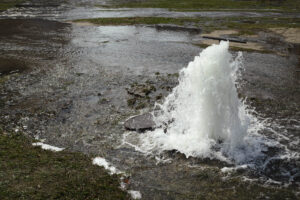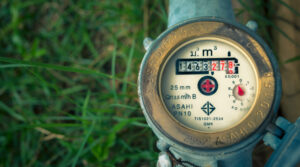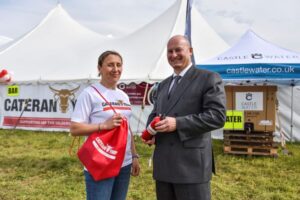As part of the Industrial Revolution, engineers straightened rivers to make them more efficient. Not only did they flow more easily and more quickly, taking the wiggle out increased the amount of usable land around them, and that meant much of it has been used for agriculture. When navigable rivers were straightened, it also sped up the time it took boats to reach their destination which was good for business.
Unfortunately, river straightening had consequences for both the ecology and the land around the rivers. The faster flowing water meant that many species could no longer use the rivers as spawning grounds, fewer plants can become established, and the faster flowing water picks up more sediment.
The land around natural river courses is often a flood plain, trapping flood waters around the river. But with artificially straightened rivers, flooding becomes a greater problem because without anything to slow it down, floodwaters are carried downstream on the faster flowing rivers, resulting in even greater flooding in other areas.
The advantages of rewiggled rivers
Once a river’s natural, meandering course is restored, the benefits quickly become obvious. The speed of the river flow slows down which improves the quality of the river water, because it picks up less sediment. The wiggles also create different depths of water, and with some areas where the water flow is slowed even more, creating habitats suitable for a whole range of different species.
With the slower flowing water, plant life returns to the river, which then provides habitats for invertebrates providing food for fish, birds and mammals which then also return, improving the biodiversity of the area.
The natural floodplains also have the advantage of keeping the river water clean. When the river floods after heavy rainfall, silt from the water ends up being deposited on the surrounding land instead of smoothing the river bed.
Rewiggled rivers have created more adaptable and resilient landscapes that are already preventing flooding in populated areas downstream. For example, in 2015, Storm Desmond caused flooding in the Lake District town of Patterdale. Artificially straightened rivers such as Goldrill Beck could not cope with the heavy rain, sending silt-filled water into the town. In 2021 Goldrill Beck was rewiggled, restoring nature and wildlife, and preventing Patterdale from flooding again because after heavy rain, the water stays in the floodplain.
How our rivers are being rewiggled
In more recent years, people have come to the conclusion that straight rivers aren’t necessarily the best after all. There has been a move towards rewiggling rivers to recreate a more natural course.
Work began rewiggling the River Stiffkey in Norfolk this summer, using large diggers to dig the new trenches. This follows on from the success of other rewiggling projects such as the one at Swindale Beck in Cumbria, a project that was jointly funded by the RSPB, the Environment Agency, Natural England and United Utilities. Not only has the ecology in Swindale Beck re-established itself, the river no longer carries so much sediment which ended up in the Haweswater reservoir that the river flows into.










